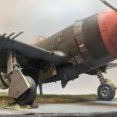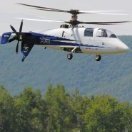Leaderboard
Popular Content
Showing content with the highest reputation on 08/20/2022 in all areas
-
It's been a while, but my 1/48 Revell (ICM) Dornier Do215 B-5 Night Fighter is being published- right now! I'm absolutely pumped. That radar is soldered bras(s) , and the cockpit is 85% scratchbuilt. Here's a couple of images from my article:15 points
-
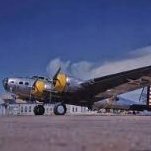
HK B-17...C 5/4 sweating the metal
zerosystem and 14 others reacted to brahman104 for a topic
The journey continues After the battle of the bay it was time to look at a few things I'd been avoiding meaning to do for a while. The first was to get the other waist window done. I did the first one in 2019, so only three years later.... Luckily, I still had the "blank" that I'd vac formed. It just needed a bit of fine adjusting to sit nicely in the hole. I then did the exterior metal work which is oversize and give me a surface to stick the window back in without fear of it falling into the fuselage, like a random hydraulic reservoir........ Fiddly and slow going, but, got there in the end. It needed a partial anneal to get the indent at the rear, and then a full anneal once all the rivets were added... I also reinstalled the .50 that had been dislodged during one of my many inversions of the fuselage during the bay work. The waist window is now a happy little vegimite and looking much more complete, save for the wind deflector.... I also wanted to get the fin on, and faired in, so I could move toward getting some paint on the big girl finally! But first I needed to attach the clear tail cone, which also needed the bombing signal lights added. I thought they were meant to be red and white, but I've seen a photo were it looks distinctly more "orange," although that could just be the lens and the colouring in the photograph too..... And in position... Not perfect, but definitely visible! I added the fin, and then worked on making a nice smooth base of putty to support the fairing, which I hope to do next bench session.. There's a bit of a gap under the rudder at the moment, but I'll just extend the surface down to close it. I just wanted to make sure the rudder would clear so I can position it slightly offset later... And an overall glamour shot for you She's starting to look less like a tadpole and more like a plane now! And she's almost full length now (just needs the nose piece). Cheers, Craig15 points -
You are right - many stainless steels are non-magnetic. However this thin sheet of steel I have is. There is a good strong attraction when a little magnet pellet is dropped onto the sheet. The reason I am getting a rather weak attraction is that there is some plastic gage between the steel sheet and the magnets. Couldn't help it. It's OK though, the panels stay in place just fine. I will keep that in mind when I next have to use the stuff - for the forward fuselage that ship has sailed. However I am so paranoid that I will get paint lifting, I might lay on a little more than "the thinnest of coats". Yeah a real YZC colored self-etching primer would have been great, but read on for my work-around. It's OK. Speaking of the forward fuselage - here it is awaiting the next steps: All I have done is to lightly sand the primer'd surface, and paint black on the panel lines. Next is a silver coat (Tamiya AS-12 bare metal silver, decanted for the airbrush). Since my last rookie post, I have spent hours watching you-tubes of chipping via the hairspray method. Thank you Thomaz (TAG) for providing links to those videos. I quickly became convinced that double hairspray chipping is the answer for exposing both YZC and alum - it's done all the time. It goes like this: 1. primer 2. aluminum (silver) coat in areas where chipping will take place 3. hair spray in areas where chipping will take place 4. YZC in areas where chipping will take place 5. chip away at the YZC to expose the silver layer 6. seal with clear coat (flat is best) 7. take a picture of the silver chipping for reference 8. second coat of hair spray where chipping will take place 9. tri-color top coat 10. chip away at top coat to expose YZC and alum layers 11. seal with clear coat (gloss or semi-gloss) for decals or stencils I practiced on my two other nose cowls: The left one was the success, and convinced me I could move on to the real thing. Here it is in work: At that point in the picture, I am at step 5 (5. chip away at the YZC to expose the silver layer). Next would be a clear coat... And here is my first attempt at chipping via the hair spray method: Close-up: Bottom: I didn't go whole hog, pictures of VF-17 Corsairs do not generally show alot of wear and tear on the nose cowl and engine access panels. I used Tamiya AS-20 insignia white, AS-19 intermediate blue (lightened with AS-20 white 2/1 ratio), and AS-8 navy blue (lightened with AS 19 intermediate blue 2/1 ratio). Just my simple attempt to have some sun bleaching on the paint. Not very scientific I'm afraid. Hopefully final weathering down the road will make it closer to the actual beat up South Pacific aircraft. I may try to chip a bit more, but it isn't easy. The Tamiya paints are a pseudo-lacquer (or pseudo-acrylic) and are not as water soluble as some other acrylics, I have learned, so it takes elbow grease. Especially the white. Accepting all manner of comments. Next post should show progress on the fuselage painting. Man does it have acreage!15 points
-

Key Publishing F-111: Fort Worth Swinger
Violator1991 and 6 others reacted to LSP_Kevin for a topic
Howdy folks, Kevin Williams takes a look at a new F-111 book from Key Publishing: Key Publishing F-111: Fort Worth Swinger Thanks, Kevin! And thanks also to Casemate Publishers for the review copy. Kev7 points -
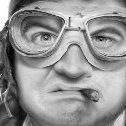
Fw-190 A-8/ R-2 "Sturmbock" Revell 1:32
Paul in Napier and 6 others reacted to Sasha As for a topic
Painted the propeller, "screwed the worm". I tried it all on the glider, there's a reason I chose this option. )))))7 points -
.thumb.png.84c5d3a464f2dd83f0ac37a5aac81ec8.png)
1/32 Tamiya P-51D Mustang "Missouri Armada"
Greg W and 6 others reacted to Antonio Argudo for a topic
I built "Missouri Armada" 3 years ago, last June I went to Prague, with the help of a local aviation researcher friend we visited the crash site, it is a well known crash site and there is even a memorial plaque, I found this a very respectful tribute from the Czech people as there are many memorial plaques all over the country honoring the fellow American pilots who fought and fell in this territory, this site has been searched many times before, little is left nowadays, mostly tiny molten aluminum pieces, after some walk in the area with metal detector some small fragments started to show up, the camera gun opening was found, it also has a small remain paint from the green camo, later a 50 cal. cartridge emerged, and what appears to be the battery cover side at the rear of the cockpit, here are in display on the bench with the model I built. this was a very cool experience I wanted to share with you guys, hope you like it, cheers Have to thank foundly to Pavel for his help and kindness, please check his amazing website: http://www.leteckabadatelna.cz/havarie-a.../detail/26/...7 points -
Dragon Messerschidt Bf 110D
Derek B and 5 others reacted to Landrotten Highlander for a topic
Step 4: Letting the model dry I studied its appearance and found it looked a bit 'flat', so I decided to press ahead with my initial thought and add some splotches of red. My initial red was too bright, so I settled for a hull red - there is more brown in this colour, which I thought would help in blending in the different tones, rather than contrasting with it as would my original bright red have done. Next picture shows a close up. Next update will be at least a week away, as I am takng a course in practical Photonic Skills with the NMIS and Strathclyde Unversity.6 points -

Key Publishing Hawker Typhoon
thierry laurent and 4 others reacted to LSP_Kevin for a topic
Howdy folks, Kevin Williams takes a look at a new Typhoon book from Key Publishing: Key Publishing Hawker Typhoon Thanks, Kevin! And thanks also to Casemate Publishers for the review copy. Kev5 points -

RAF Cosford museum model room / Lancaster display
nmayhew and 4 others reacted to Phartycr0c for a topic
For anyone who may of seen or is aware of the Lancaster display in the model room at RAF Cosford Following a decision to replace the long standing model room with a "reflection room" (whatever that will be) the hunt was on to identify an alternative location for the display. Approaches were made to a large list of possible places including BBMF, East Kirby, Bomber Command Association, AVRO Heritage Centre, various squadron associations and mainly due to the size/ lack of interest, finding a new home was becoming difficult as time was becoming of the essence. As of yesterday, this was the sorrowful sight at Cosford after hosting a modelling room for over 50 or more years the models precious wartime artifacts and hand built cabinets are to be removed. An exhibit with 100% footfall, not only was it popular but it was inspirational Spencer pollard had some of his builds on display together with many large scale scratch built exhibits, the builders of which have sadly passed. I am however really pleased to say that through the Polish Heritage Flight at Duxford I was put in contact with Squadron Leader John Sharpe RAF retd at the Boscombe Down Aviation Collection who on hearing from the PHF and seeing my appeal tweet, made contact as Boscombe Down are currently building a Lancaster cockpit replica with which the display in Johns words "will be perfect". Commence operation Lancaster Liberation and as a result the display now sits safely in the custody of the really enthusiastic workers and volunteers at Boscombe Down Aviation Heritage Museum. So, the display, as intended, continues to provide an interest in a public setting, together with an educational and hopefully inspirational element. Many thanks to Derek Rusling at the Polish heritage flight together with John Sharpe of Boscombe Down Aviation Collection and especially Simon "Sully" Thomasson (Sullys scale models), who built the majority of the lovely vehicles on the display and Peter Maxwell who fashioned the figures that bring this display to life. I know I've rambled but to say I am pleased is an understatement!5 points -
Couldn't we have 'all' the images ? I thot we were all friends here ...5 points
-
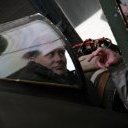
Airfix 1/72 Typhoon , end of a modelling era
monthebiff and 3 others reacted to Panzerwomble for a topic
My father chose to pass away three days before my birthday in March. A fall, he never woke up again, and although I miss him; I felt at 94, still active, still living unaided in the same home he and my mother bought in 1964, he had, as we English like to put it, a “fair innings”. 40 years in the Royal Navy, thirty years on a comfortable pension, a good life. My mother, now failing and in a hospice, will follow him in a few weeks, and as the only child, mine will be the task of winding up their affairs and selling the family home in which I grew up during the 1970’s and 80’s. It’s a rite of passage, the losing of old familiar places, and of people who shared those old common memories. The young boy who devoured Commando comics and Airfix kits at a vast rate, graduating to Tamiya armour & thick tomes of history, before finally, the flight to university, pub, girls, kids and career, home town left behind -never to return. And so, in this long hot summer of 2022, I’m reminded of summers of my childhood, equally hot and long, and of the models I made, the chronology of which has mostly been lost over the intervening decades. It occurs to me that in a few short months, the opportunity to build another model here will be lost, and so I decided to make one last model in my parent’s house. Some, old school, old tool kit, using the same methods and tools as of 40 years ago. Choice was a little random, I recalled making this old 1/72 Typhoon around 1977, then lazing around on the flat garage roof sunbathing. Tooling was originally 1959 so nearly 20 years old when I made it back then….. Airfix continued releasing the same kit up to 2009 …way beyond its expiry date - in my mind they have no shame for peddling such old tat. So, methods - all brush painting, tube glue, tweezers and kraft knife …no superglues or extra thin cement, airbrushes etc, masks, proper thinners or decal fixers. All the methods of the 1970’s not the 2020’s. This is the model I bought, c/w 12 year old mini acrylic paints (sadly not enamels) ….and the original release I bought back in the model shop in ’77. Fit is not bad in all honesty, raised details are ok for the scale, all the parts are way too thick, but it sort of hangs together. Wings were slightly warped but good old clothes pegs pulled them together ….fit with the wings could do with some filler but that was not my methodology back then . Paint brushed straight to plastic, no primers or masking tape here. Kit decals are 40 years ahead of the old ones, but with no varnish coat I’m sucking up a bit of silvering. Tube glue is ropey too, even using it with a toothpick. And so, after a few days of nostalgia, this the last model I’ll make at this house, from a Frog Bf110G in 1973/4 to this Typhoon nearly 50 years later. End of an era, we move on. QRT.4 points -
A-7D Corsair II 120th, Colorado ANG. Model trębacza 1:32 Malowany Hataka Hobby Red. A-7D Corsair II Trębacz 1:324 points
-
.thumb.png.84c5d3a464f2dd83f0ac37a5aac81ec8.png)
1/32 Tamiya P-51D Mustang "Missouri Armada"
nmayhew and 3 others reacted to Antonio Argudo for a topic
Thanks Quang for your reply, yes, on Olivier's build I got the "Missouri" bug you are right, I missed that mistake in the Eaglecals, actually the lettering is slightly oversized too, the Letter codes in the fuselage the G and E need to have a middle cut (don't know this term) I painted that line, and the checker nose does not match the original... at that point only wanted to finish the model and had to discard fixing those details, I am thinking about doing a more refined version and also on her legs but not sure if I can with all those unfinished projects I have piling up I built also "Sad Sack" which was the later nose art this aircraft had after it passed to Lt. Ridley who bailed out from this plane, I used the 1/48 Eduard kit and Bullseye decals, it was built for my Czech friend who took me there.4 points -
Not a lot of time for modelling today....hedge cutting was a greater priority , however I did manage to get the trim wheel (I assume that's what it is) completed. I found a disc, I think from HK's Meteor kit wheels, which was a right size but solid so I spent a couple of hours cutting out some plastic! It's not perfect, but given the location and how much will be visible it's good enough. Once again, plaudits for Silver Wings for getting the framework size and position absolutely spot on!! There's one other feature that I want to add to the cockpit, but I'm not too far from closing up. A couple more pics of some Gauntlets in tight formation:4 points
-
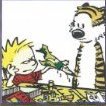
Hobby Boss B-24L (26 Feb 2023: tail turret)
blackbetty and 3 others reacted to easixpedro for a topic
Morning folks. Unexpectedly found myself alone in the house last night, so spent some quality time at the work bench. Managed to get the left waist window done. Had previously opened it up, so last night I was able to cut a piece of clear sheet and glue it it. After a quick polish, I used some foil tape to replicate the panel that was used to attach the window to the fuselage. You can see the hole I cut for the .50 cal. will sort that when I start working on the waist section. Am debating on the right side window. My uncle said his was blown out. I might make the opening and then leave the clear bits out. That would be a cool conversation piece! Also managed to get one side of the cockpit painted up, but no pics of that yet. Hopefully this weekend. Thanks for following along, appreciate the comments! -Peter4 points -
.thumb.png.84c5d3a464f2dd83f0ac37a5aac81ec8.png)
1/32 Tamiya P-51D Mustang "Missouri Armada"
Greg W and 3 others reacted to Antonio Argudo for a topic
thanks for your words, I appreciate it, some PS composition with my model, thanks to Raul and Andrew Forrester cheers4 points -

Infinity Models DH-100 Vampire F Mk3
scvrobeson and 2 others reacted to thierry laurent for a topic
To go back to the Vampire, compare cautiously the prices of the different resellers!!! There are differences going up to... 25% and I'm not even considering pre-order prices! Prices I saw are going from 65 to 93 euros. I went today with my son to a modelling exhibition and bought the second boxing from a Polish reseller. The price was too low to resist as I already built half of the first kit and started the Sea Vampire conversion in one week! I really love that kit in spite of some assembly challenges. I also saw the Tunnan and the prices differences were similar. Caveat emptor!3 points -
Full screenshot gallery: https://postimg.cc/gallery/d3T1Fvs Date: 08/01/2022 Leg: 004 Depart: Vilo Acuna, Cuba (MUCL) Arrive: Port-au-Prince, Haiti (MTTP) Route: Overfly Grand Cayman, overfly Kingston, Jamaica Total time: 5.5hrs Instrument time: N/A Night time: N/A Takeoffs (Day/Night): 1/0 Landings (Day/Night): 1/0 Instrument approaches: 0 Total trip time: 14.9hrs Route: Weather: Clear with generally light winds. Heavy turbulence over mountainous areas. Heavy haze over Port-au-Prince. Narrative: After a brief overnight on the beautiful island of Cayo Largo del Sur, we checked the weather, planned our flight, and loaded up 72Z for the trip to Port-au-Prince, Haiti. With such beautiful tropical weather, we decided to take something of a scenic route, bouncing from Cayo Largo to Grand Cayman, to Jamaica, then Haiti. This also helped keep us reasonably close to land in case something went south and the Beech decided she’d had enough. After a quiet overwater flight, Grand Cayman Island slid over the horizon. On reaching Cayman’s southern shore, we swung east and headed towards Jamaica. It wasn’t long before the lush green island came into view amid a scattering of puffy clouds. Soon, Jamaica’s capital, Kingston, hove into view. I was surprised by the density of the urban area. It was by far the most dense we’d seen since leaving the US. Just east of Kingston is a series of mountains with towering peaks that, despite our altitude, we were looking up at. We detoured slightly to the south to avoid them… almost. I wanted to get a good up close view, so I flew probably a little closer than I should have. The turbulence was terrific. At one point, we were tossed upwards at over 2000 feet per minute by the winds racing up the mountain slopes. Back over the ocean, the turbulence calmed and we were soon over Haiti’s long southern peninsula. Again, the mountain turbulence tossed us all over the sky. As we neared our destination of Port-au-Prince, I tuned in the AWOS (automated weather observation system) there to get a bead on the weather. The news wasn’t good. An afternoon fog had rolled in, dropping visibility to just the bare minimums for visual flight. To be safe, I had my instrument approach charts handy, but opted to at least try for a visual approach first. Making heavy use of the GPS to approximate lining up with the runway, we groped further into the afternoon murk. At three miles, the faintest outline of the runway emerged from the fog and we swung round to the final approach bearing. With a squawk, 72Z’s tires kissed the damp pavement and we rolled to a stop. Despite requesting parking at the GA ramp, ground control insisted we taxi to the main terminal gates. Seemed odd, but I’m not one to argue. After half a day in the cockpit, we were all relieved to be on the ground again. But, we weren’t planning on staying long as we wanted to get to St. Croix soon. Calling the line crew for fuel, I was off to plan the next leg of our flight.3 points
-
Here's a bunch of photos of the "pretty much finished" marathon tank build that's cured me of doing any more 1/16 tanks and any vehicles with interiors...done-dun-dun..LOL. Enjoy the photos and as always, comments are welcome. NOTE: No further narrations of the photos...these are just photos.3 points
-

Hobby Boss B-24L (26 Feb 2023: tail turret)
Paul in Napier and 2 others reacted to easixpedro for a topic
So. It was time to bite the bullet and work on the bombardier’s sighting windows. Couldn’t do more of the stringers till I knew what that area was going to look like. Here’s the left side with the Nav windows and the stringers done. You can see I went a little caddywhompus on one of the formers…it’ll still work. More important that it gives the representation, as there will be a bombardier hunched over his Norden, so not everything will be completely visible. Before the Prowler, there’s no way I would’ve attempted to make the windows, but not now. Still pushing my limits, but getting comfortable with the process. @airscale Peter Castle had recommended using resin instead of the basswood buck, and this was the perfect time to try it. I used some white glue to attach all the clear parts to the nose and then kneaded up some silicon casting putty and wrapped it around the nose. At first I just put a piece of styrene in as a dam and poured the resin…hence the “Great Resin Disaster of 22.” Good lord, I had resin everywhere! Comical actually. But I actually got a good cast, so all’s well that ends well! (In the pic, the silicon dam was added afterwards, in case my part didn’t work out) Here’s the resin buck after sanding/smoothing and you can see my clear piece in the background. I just heated a piece of clear plastic over the stove and smashed it over the mold -it’s a really simple shape so this process was easy. Here it is just laying in place. You can see a LOT of the interior, even without having polished the clear bits yet. And a side view. It’ll need a smidge of putty, but that shouldn’t be too big of a deal as the nose profile with these windows is a bit different than the standard J model. Also, most of the seams will be away from the edges of the actual windows, which will allow me to glue, sand and finish without fear of fogging etc. and the other side… Now back to the stringers so I can work towards getting the nose compartment done. Will need to figure out how I want to do the crew as well. More as I plug along, but certainly happy to have this major stumbling block solved! Future ones are the A3 “High Hat” turret and the enclosed waist windows. More on those when the time comes! -Peter3 points -
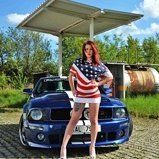
F4U-1 Maj. Owens, VMF-215, Munda 1943
BrentE and one other reacted to Miloslav1956 for a topic
My Corsairy number 18. I will build two more F4U-1Ds this year, F4U-1 Maj. Owens, VMF-215, Munda 1943 1/32 Tamiya model, Barracuda wheels, Quinta Studio 3D cockpit, Maketar Mask, All colours MRP.2 points -

F4U-4 Early, Keneth Walsh VMF-222, 1945
BrentE and one other reacted to Miloslav1956 for a topic
Project 18/22 1/32 F4U-1D Tamiya. he Tamiya model will be converted using parts from the Trumpeter model. Barracuda wheels, Painting mask homemade, Aires propeller, Verlinden Cockpit, Quinta studio 3D cockpit, All colours MRP2 points -
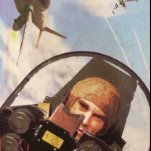
Infinity Models 1:32 de Havilland Vampire F Mk.3
CarstenB and one other reacted to Alain Gadbois for a topic
Hi! This might help with your work on the gun openings: Alain2 points -
Two more to add to the pile, again from Casemate.2 points
-
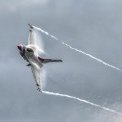
Has anyone used Procal decals?
Daywalker and one other reacted to Stokey Pete for a topic
I just finished a HAF F-16 using Procal markings and stencils. I found the colours to be a bit stark for what I wanted to achieve but I managed to knock them back with a lot of fading. On the sheet, they look thick….but when applied look totally different. I used Mircroset under each one, allowed to dry overnight before applying Microsol. They’re great value for money, I could get another jet out out of the remaining decals.2 points -
Dragon Messerschidt Bf 110D
Fanes and one other reacted to Landrotten Highlander for a topic
famous last words?2 points -
1/18 Scale Blue Box F4U-1A Corsair Modification
easixpedro and one other reacted to Oldbaldguy for a topic
Well. Not sure you need us anymore. Looks like you nailed it right out of the gate.2 points -
Mine showed up the 3 days ago, 10885 nad was in perfect condition. Almost 1 year to the day when I ordered it. Dave2 points
-
Been pretty tied up with the work on the Hurricane, but this one is still getting some love every now and then! After I had laid down some primer in various areas I saw that the fit between the engine, cowl where I had added some styrene to adjust the length, and the gun deck, was pretty lumpy. So I spent some fair time sanding down and sorting that area out. Cockpit and all the various little bits were added, the canopies were masked (interior and exterior) and painted, as well as adding the grab handles and head armour. Below is an image of the tub just before the canopies were added. Hopefully I've blown all the dust out - she's going to be a closed-up bird. And there she is with the glazing on. Pretty happy with the fit, the time I spent fettling and sanding beforehand seemed to have worked. I will be filling the small gaps between the framing with diluted PVA to ensure paint doesn't get inside. The glazing has just been glued on with Mr Hobby S, still needs some minor blending around the aft section. Once that's done, she's ready for primer!2 points
-

1/32 Fly Hurricane Mk. 2C Night Fighter (Done)
Rick Griewski and one other reacted to IainM for a topic
Here are some in-progress images of the Hurricane. I cut masks for the fuselage code and national insignia using my Xtradecal set (X32063) I had bought as reference. The dull red was Tamiya lacquer LP18 straight up - great match to the colour on the decal sheet! Blue was Tamiya XF-8 Flat Blue and XF-1 Flat Black in a ratio of around 3:1 to match the colour on the decal sheet. The yellow was AK RLM04 with a touch of a brighter yellow to match the sheet and the white was Insignia White with a touch of Off-White. Stencils are from HGW, which were applied after a coat of AquaGloss over the paint - hence the reflectivity in the images.... I also discovered a way of getting rid of the glue residue from the HGW transfers - Mr Softer! Always had an issue trying to get completely rid of the residue just using water, but this time I brushed Mr Softer over the glue residue, quick wipe with a soft cloth, and gone!2 points -
That's the ticket. Great show. Sincerely, Mark2 points
-
I've started to look at the various parts and added diluted Vallejo putty, in liquid form onto the 3d printed parts, to get to better see the stepped surface and try fill it inn, to make them more smooth before sanding. 05 It is important to not flood the corners as the putty will pool there and might be hard to get rid of nicely. Also a good idea to avoid filing in holes with liquidfied putty, even if the fill power isn't that good. Having looked at the ejection seat parts, it looks like I can remove most of the stepped surfaced and make it look nice and smooth. I think I will either airbrush on dull aluminium, or, perhaps even mix in Uschi paste and/or polishing powder on the seat as well for the aluminium parts. So with the Vallejo 17m bottle of putty, I just place a dab of putty on a small platter and mix at the side, with a pool of water on the other side, to avoid the little amount of putty being entirely liquified. Then I soak up the liquified putty with a brush and carefully apply it to the 3d printed parts.1 point
-
Fantastic idea - I will keep this in mind! Hehe thanks Kev. That was more born out of trouble with getting a decent finish without loads of paint, rather than out of a genius' mind. Plus the pure Off White looks way too green to my eye.1 point
-
Matterhorn Circle Swiss Vampire decals
Alain Gadbois reacted to morane for a topic
Hello And do not forget that for a Mistral it is also necessary to make from scratch an ejection seat Type SNCASO E 86. It is also necessary to modify the layout of the cockpit. We can always hope that a craftsman will give us a conversion. "Contact resin" had done it at 1/48th for the Classic Airframe Vampire. It is not a very complex conversion. Wait and see Richard1 point -
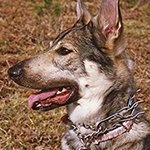
Takom 1:16 Panzer IB
LSP_K2 reacted to josebagasteiz for a topic
You are very close to the final assembly and that makes me happy because I want to see what it will look like. a greeting1 point -

Announcing “Building the Wingnut Wings Felixstowe F.2A (Early) in 1/32 Scale”!
Wackyracer reacted to LSP_Kevin for a topic
I’m pleased to announce that the next title in our Build Guide Series will be Building the Wingnut Wings Felixstowe F.2A (Early) in 1/32 Scale, by Gary Boxall. Those of you who have seen Gary’s amazing build on Facebook will appreciate just how terrific his model is. Work is currently under way, with an anticipated release date of late September. Stay tuned for more news and information as it comes to hand! And thanks to everyone who has purchased the new Phantom book so far for helping to make it our most successful book launch to date! More news soon… Kev1 point -

A-7D Corsair II, Trumpeter 1:32
phasephantomphixer reacted to Lee White for a topic
I've seen them out of Buckley AFB, that really looks the business.1 point -
1/18 Scale Blue Box F4U-1A Corsair Modification
JayW reacted to Maybach_man for a topic
If you are actually using Stainless sheet, it may be that it is Austinitic ( non magnetic)...that could be part of the issue 304 and 316 are two.1 point -
ZOUKEI MURA 2019-2020 - NEW P-51B/C, Bf-109G and Ar-234 ANNOUNCED!!!!!!
Tony T reacted to Dave Williams for a topic
Concerning the Raiden news, it’s not a case of them doing it as they’ve already done it. The kit was released nearly 10 years ago. The way I read the blog, they’re just telling you that it’s nearly sold out.1 point -
Off white over white - brilliant idea! Kev1 point
-
Looking real good, especially the very neat insignia. When you apply the final finishing touch, it would be a good idea to tint your varnish with a bit of colour (blue/red?) for some extra nuances.1 point
-

ICM Fiat CR.42 CN from 377 squadriliga - completed
Isar 30/07 reacted to Fanes for a topic
That's interesting! I already wondered why the fuselage was looking dead flat in all the pictures. But before we go into gloss and/or flat, some white had to be applied. Since I had quite some problems with getting a good opacity without 42 coats - looking at you MRP Insignia White - trying Tamiya`s new(ish) liquid surface primer in white seemed like a good choice. I wasn't disappointed. It went down super smooth thinned with levelling thinner (around 60%) and I only needed a very thin coat + mottling. Same game for the underwing insignia Everything was then blended in with Gunze's Off White and here we go: and so much better than any decal (even though it's slightly skew) Next up: the numers on the fuselage's sides, but I will give the white a full day to cure to not lift any paint with the masks.1 point -
From the Company that released the Lancaster
ScottsGT reacted to adameliclem for a topic
Pro-tip from someone born in Buffalo, educated in Poughkeepsie and tested in NYC, with very old New York State roots: the worst “New Yorkers” are actually from Vermont. Adam1 point -
The F-86 and MiG-15 (specifically the MiG), would make my day.1 point
-

Takom 1:16 Panzer IB
mustang1989 reacted to LSP_K2 for a topic
My goal tonight was to finish the prep work on the 10 road wheels, and aside from removing some acrylic putty here and there, I believe these are now ready for paint. Sorry for the somewhat fuzzy photo.1 point -

Zvezda Star Destroyer - a new detailing project
mustang1989 reacted to The Madhatter for a topic
I know I've already posted a fair bit over the past couple of days but I thought I'd share my successful lighting in the one part I had strong doubts about getting lit. The part itself is only 8mm x 5mm x 4mm and there was no way I was going to be able to thread nearly 20 fibers through it, so I went with the flood light method which is cutting off 4mm pieces of single strand fiber and sticking and gluing them just 1mm into the wall and then sealing off the bottom with a strip of styrene (that has some al-foil stuck to the bottom to better reflect the light up). Inside the rear of the wall. I stuck a 2mm SMD upright through another small strip of styrene and then glued that onto the roof. Hopefully the pictures will explain better than what I can in words (sorry for the slightly blurry image there - I was struggling to get the phone to focus) I've already fixed that light leak but I kinda wish I hadn't as I like that floodlit area. Maybe once its been painted black again I can chip a bit out and let that spread. We'll see how much light is left leaking soon enough. Anyway, I was pretty happy with this Thanks for looking Si1 point -

MPC Snowspeeder
TAG reacted to Alain Gadbois for a topic
I managed to finish removing all the kit fins with the help of Dremel,cutters, sanding stick and sharp X-Acto. The engine section has been glued back on and the three types of fins in progress is shown. The finished larger fin is shown in place temporarily. Note it is a sandwich of three parts. Alain1 point -
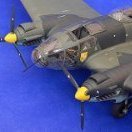
Revell 1/32nd F/A-18E Super Hornet
F`s are my favs reacted to tomprobert for a topic
Still plodding along with this one... I've made a start at repairing the damage done to the surface by the filling and sanding process, but wanting to see some physical progress I decided to add the flight control surfaces to the model. Flaps and slats are now attached. The leading edge slats didn't fit too well and the inboard slats especially needed a fair bit of trimming to sit in their correct positions. The flaps hinges are a bit of a fiddle, but once in position hold the flaps fine - the inboard flaps are not glued at this stage so I can remove them when it's time for paint and decals to make the whole process easier: And the underside: The stabilisers are also built, but they wouldn't hold in position for the pictures - I think they are going to have to be pinned in place when the time comes to attach them permanently. Despite the chore it's been to get this far, I am actually quite enjoying it and so far, enthusiasm remains @StarfighterI took on board your comments about the spine fix, but I think to get it looking correct I'm likely to sand through the plastic so have decided to leave it as is... All the best, Tom1 point -
.thumb.png.84c5d3a464f2dd83f0ac37a5aac81ec8.png)
1/32 Tamiya P-51D Mustang "Missouri Armada"
Greg W reacted to Antonio Argudo for a topic
some progres, exhaust stains cheers1 point



